#Sino-Vietnamese War
Explore tagged Tumblr posts
Text
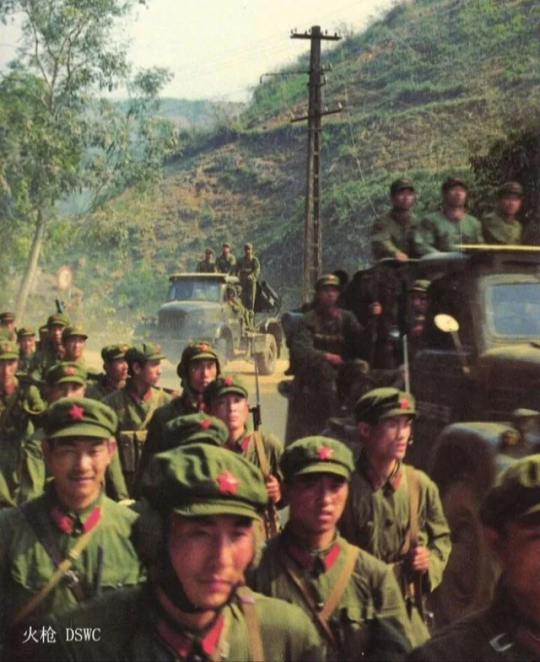
Chinese PLA invade Vietnam, 1979
52 notes
·
View notes
Text

Chinese POWs during the late 1970s Sino-Vietnamese War
2 notes
·
View notes
Text
The development history of CAT OF WAR:BACK TO VIETNAM
I had this idea at first is I was new to the scratchcn (A Chinese-based localization community) there was a third person shooter project named “CAT OF WAR VIETNAM” This project incorporates the scratch cat into the war nicely
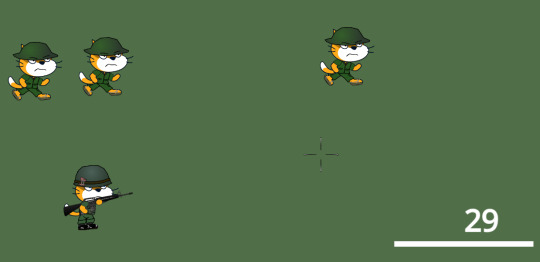
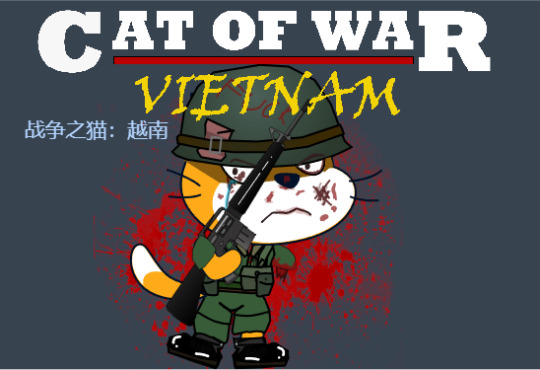
At this point I'm develop some third-person shooters incodema(It developed a development kit called “kitten” based on scratch) At that time I saw that cat of war had great potential in the kitten engine,Because kitten has “screen capabilities”, it can be easier to develop large-scale projects with plots
So I tried to Develop a cat of war with the background of the Sino-Vietnamese War in 1979
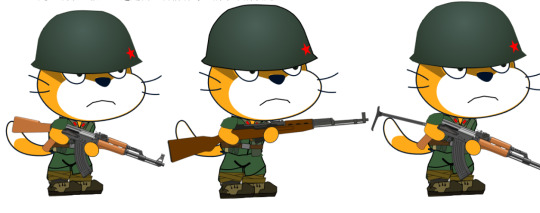
some early concept art
But in the end I gave up because I imagined developing a cat of war based on a fictional war during the Cold War So you see the CAT OF WAR WWIII in the end。
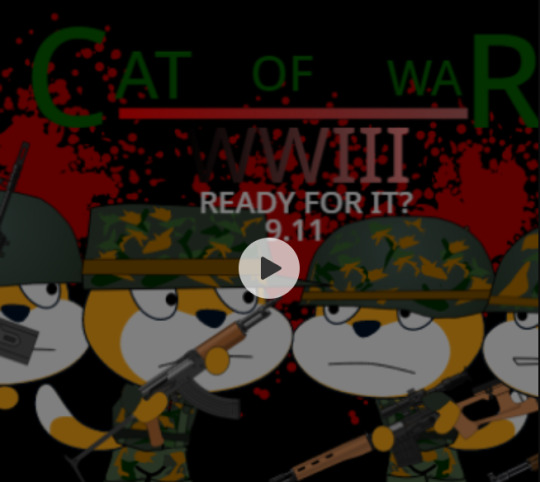

But after I ended the development of WWIII, I started working on this almost abandoned project again I repainted the previous concept art to make it more in line with my art style
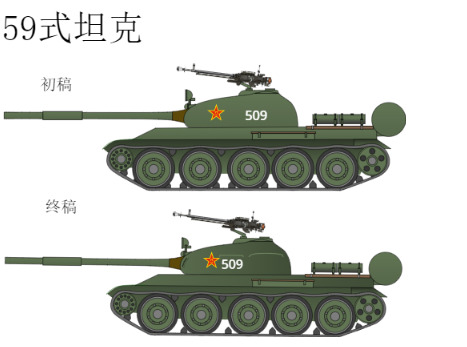

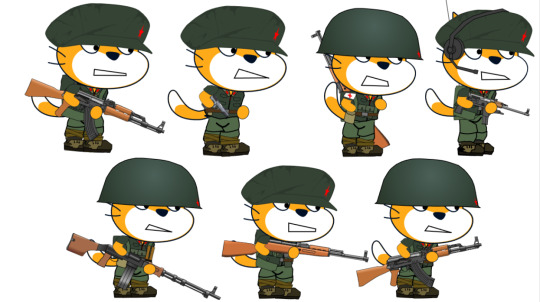
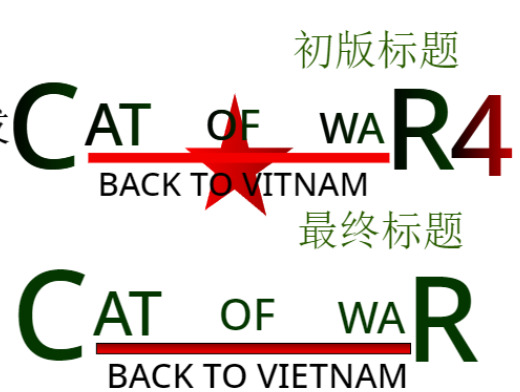
final art
Finally,the first chapter of the project has been developed here is the scratchers also provide support during development
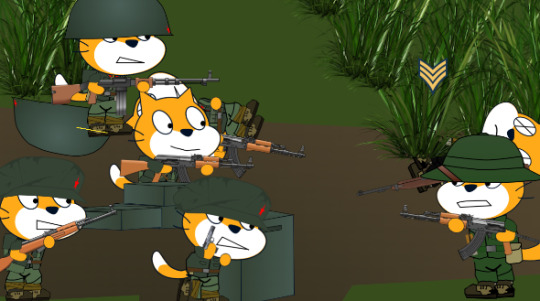
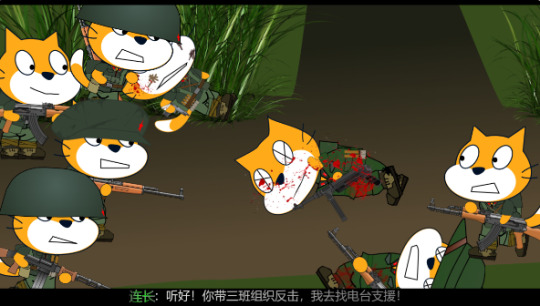
some screenshots of demo
The first half of Chapter 1 is available as a demo here But I need some developers who have some knowledge of English to translate this project, if you want to join, please join our development channel at here The complete project will be launch around 2024, thanks for the support!
0 notes
Text
Sino-Vietnamese conflicts 1979–1991

Chinese PLA officer Ma Quanbin reports to his command after a battle against Vietnamese forces on 14 October 1986 during the Project Blue.

Chinese PLA troops occupying Phong Tho, Third Indochina War, 1979

A convoy of Vietnamese soldiers head to the frontline during the continuing border clashes between the People's Republic of China and the Socialist Republic of Vietnam following the Sino-Vietnamese War of 1979.

Vietnamese soldiers in a trench in the Lang Son region during the Sino-Vietnamese War, March 1979.

Chinese PLA troops sealing shops in occupied Gam Dong, Third Indochina War, 1979

Vietnamese soldiers guarding Chinese prisoners in the Cao Bang area during the Sino-Vietnamese War, March 1979.

Vietnamese soldiers in the Cao Bang region during the Sino-Vietnamese War, March 1979.

Chinese PLA troops firing on Vietnamese near Lang Son, Third Indochina War, 1979

Vietnamese soldiers leaving for the front during the Sino-Vietnamese War, in 1979, in Hanoi.

Chinese PLA tank near Lang Son, 1979
#Sino-Vietnamese conflicts#Third Indochina War#china#Vietnam#war#cold war#asia#war history#chinese army#vietnam army#Vietnam wars#vietnam war#1970s#1980s#1990s#photography#tumbler#tumblr#soldiers#photo#world war 2#wwii#ww2#second world war#world war two#wwi#black and white#world war 1#ww1#history
12 notes
·
View notes
Text

Emperor Le Loi. Source: Bao Lam Dong website
In 1400, the Chinese Ming dynasty, taking advantage of internal turmoil in the Kingdom of Dai Viet, invaded Vietnam and briefly occupied it. Vietnamese general, Le Loi, led a nine year guerrilla resistance against the Chinese invaders and eventually drove them out. In 1428 he became Emperor of the restored Kingdom of Dai Viet, founding the Later Le dynasty. In 1431, the Ming formally recognised Vietnamese independence. Le Loi is one of the most famous heroes of Vietnamese history, and considered a national hero.
#vietnam#Vietnamese independence#le Loi#ming dynasty#sino vietnamese war#later le dynasty#kingdom of Dai Viet
0 notes
Note
Arc Dream: Look it is okay to profile Tcho Tcho because they aren't real people, they are alien channelings so its no big deal
Pelgrane Press: The Tcho Tcho people are fierce anti communist and great allies to bring the American dream to the Vietnamese people. We need to arm them immediately!
ArcDream: Doesn't know that the United States armed Pol Pot's Khmer Rogue to instigate a war with Vietnam and further the Sino-Soviet split.
Pelgrane Press: The US would arm the Blind Idiot God himself if that meant somehow getting China onboard with fucking the soviets in the ass.
16 notes
·
View notes
Note
What is your FAVORITE ever dnd campaign (I would love to hear about the setting and worldbuilding the most!! :3)
Oh boi! You best buckle up!
I've run 5 campaigns to date, the last of which is still ongoing, but I think the 4th is my favourite, and that's mostly because the setting is actually fleshed out and not based on any source material. I arrived at the setting by polling my players for what kind of game they'd like, and the result is something we'd've never come up with on our own! The first poll was for genre, and we landed on historical fiction / folklore. Rather than just do the Euro history and folklore I and most of players are familiar with, though, I then polled them for what other region in the world they'd like to play in because I thought it'd be fun to learn about other histories and cultures. Western North America and East Asia were tied first, so I developed a setting based on the cultures around the North Pacific.
I settled on an ice age setting and adapted a map of the Bering land bridge into a fantasy map that stretched from Hokkaido to the Yukon and populated it all with different D&D races, ascribing them different real life cultures. The world as a whole I called Nuna, which means 'land' in the Inuit languages. I'll describe each region, it's real world geographical analogue, and the races that inhabit it, and why I ascribed them which cultures.

Going clockwise around the Pacific Rim, the first region is Noshima. Noshima is equivalent to modern day Hokkaido, Sakhalin, and the Kurils. The largest culture present is the Yamono, which are represented by beastfolk, a race I adapted from FAGE, the system I was running the campaign prior. The beastfolk were flavoured as the mortal counterparts to Japanese kami, which as I understand, are regional nature spirits. Noshima also had populations of the Toki, Men, and Elun: avens, humans, and aarakocra respectively. I'll describe the former two shortly, but the aarakocra are specifically flavoured as Steller's sea eagles. I can't remember what culture they leaned towards: they were pretty inconsequential in the campaign narrative and I just liked having Steller's sea eagles.
The next region is Yushen, roughly equivalent to modern day Manchuria and the Amur river basin, and is mostly represented by cultures inspired by the Sino-sphere. I'll discuss the Amur, Long, Heixuan, and Toki first. These were the original inhabitants of Yushen, and they're inspired by the 4 symbols or holy creatures of China: the Amur are felid shifters aligned with the White Tiger, the Long are dragonborn aligned with the Azure Dragon, the Heixuan are tortles aligned with the Black Tortoise, and the Toki are scarlet ibis avens aligned with the Vermillion Bird. (The Heixuan also leaned Vietnamese because I had a player want to lean into some Vietnamese folklore playing a tortle.) These 4 races/cultures were pushed to the peripheries of Yushen by the invading Men, or humans, who were in turn pushed to the peripheries by the invading Chi Sou, or orcs. These were inspired by some Chinese folklore regarding invading barbarians from the South-West, and I engaged in a little bit of stereotype. Yushen is also home to the Deva, or aasimars, in what would be the Sikhote-Alin mountains; the Deva were ascribed a broadly Indic culture, and they arrived together with the Chi Sou from far to the South-West.
Next is Jangso, which is broadly Korea: I did basically plop the Korean peninsula into the Sea of Okhotsk for the map. The major culture in Jangso is the Doke, or goblins. This is purely because at the time a friend had me watching the K-drama Goblin. Next there's the mixed Gokebi culture of verdans, a product of when a population of humans fleeing the invading Chi Sou settled in Jangso. There's also the Kebi in Jangso, the gnomes, who historically warred with the Doke.
To the North-West is the arid region of Khamda, broadly inspired by Mongolia. Khamda is populated by the Khernet, Sayatchi, Morinet, and Yamanet: yak-headed minotaurs, golden eagle avens, centaurs, and satyrs respectively. Khamda never played a role in the campaign narrative so it's not terribly well fleshed out, but the idea is that each is a population descended from a tribe of Men so spiritually connected with their animals in their nomadic lifestyles that they affected their physiology: falconers became avens, and herders became the rest.
The next region back on the Pacific Rim is Mokotan. Although Mokotan is geographically based on Kamchatka and Eastern Siberia, culturally I based it on Hokkaido since I based Noshima on the rest of Japan. The two cultures here besides the aforementioned Elun are the Jomon dwarves, based on the Jomon culture, and the Ainu-flavoured Pokkur halflings, based on the korpokkur.
Where the Bering land bridge is is the region of Emeq, populated by tritons. I ascribed them a Russian culture, but they were probably among the least fleshed out.
What corresponds to Alaska is the region of Nanaurat. In some ways it's the rest of the map west of Emeq in miniature: there's the Nanuk ursine shifters, Umiaq dwarves, Haarak halflings, and Kuutchik bald eagle aarakocra who are all related to their Western cousins. Nanaurat is broadly based on Inuit cultures, and I specifically wanted to lean into the connections between the East Siberian Yupik with the rest of the Inuit, as well as some of the more dubious connections between the Siberian Yeniseians and the North American Denes. Also in Naunaurat are the Yuktuk kor, guardians of the glacial pass to the rest of North America. Finally, theres the Kinichuk goliaths as well, and their western cousins were native to the pass betweem Jangso and Khamda, but they died before the glaciers came when the Doke and Kebi were still warring.
To the east of the map, beyond the glaciers and in what would be Canada, there's also firbolgs and elves, of which there are a few vagrants in Nuna.
I also have a bunch of lore to go with this all, at least the parts relevant to the campaign narrative, but this should do for an overview. A common throughline, though, is that each culture has its own explanation for what caused the ice age: Emeq was once a sea and it was only in the last 300-400 years that it rose of the sea when the glaciers developed around the rest of the land.
Feel free to ask for particulars about anything! The campaign was primarily set in Noshima, Yushen, and Mokotan, but I had 3 PCs from Nanaurat.
#dnd#d&d#d&d 5e#pope hears confession#homebrew#worldbuilding#folklore#japanese#ainu#chinese#vietnamese#korean#mongolian#russian#inuit#historical fiction#dm pope#original content
3 notes
·
View notes
Text
Events 3.16 (after 1970)
1977 – Assassination of Kamal Jumblatt, the main leader of the anti-government forces in the Lebanese Civil War. 1978 – Former Italian Prime Minister Aldo Moro is kidnapped; he is later murdered by his captors. 1978 – A Balkan Bulgarian Airlines Tupolev Tu-134 crashes near Gabare, Bulgaria, killing 73. 1978 – Supertanker Amoco Cadiz splits in two after running aground on the Portsall Rocks, three miles off the coast of Brittany, resulting in the largest oil spill in history at that time. 1979 – Sino-Vietnamese War: The People's Liberation Army crosses the border back into China, ending the war. 1984 – William Buckley, the CIA station chief in Lebanon, is kidnapped by Hezbollah; he later dies in captivity. 1985 – Associated Press newsman Terry Anderson is taken hostage in Beirut; he is not released until December 1991. 1988 – Iran–Contra affair: Lieutenant Colonel Oliver North and Vice Admiral John Poindexter are indicted on charges of conspiracy to defraud the United States. 1988 – Halabja chemical attack: The Kurdish town of Halabja in Iraq is attacked with a mix of poison gas and nerve agents on the orders of Saddam Hussein, killing 5,000 people and injuring about 10,000 people. 1988 – The Troubles: Ulster loyalist militant Michael Stone attacks a Provisional IRA funeral in Belfast with pistols and grenades. Three persons, one of them a member of PIRA are killed, and more than 60 others are wounded. 1995 – Mississippi formally ratifies the Thirteenth Amendment to the United States Constitution, becoming the last state to approve the abolition of slavery. The Thirteenth Amendment was officially ratified in 1865. 2001 – A series of bomb blasts in the city of Shijiazhuang, China kill 108 people and injure 38 others, the biggest mass murder in China in decades. 2003 – American activist Rachel Corrie is killed in Rafah by being run over by an Israel Defense Forces bulldozer while trying to obstruct the demolition of a home. 2005 – Israel officially hands over Jericho to Palestinian control. 2010 – The Kasubi Tombs, Uganda's only cultural World Heritage Site, are destroyed in a fire. 2012 – Former Indian cricketer Sachin Tendulkar becomes the first batter in history to score 100 centuries in international cricket. 2014 – Crimea votes in a controversial referendum to secede from Ukraine to join Russia. 2016 – A bomb detonates in a bus carrying government employees in Peshawar, Pakistan, killing 15 and injuring at least 30. 2016 – Two suicide bombers detonate their explosives at a mosque during morning prayer on the outskirts of Maiduguri, Nigeria, killing 24 and injuring 18. 2020 – The Dow Jones Industrial Average falls by 2,997.10, the single largest point drop in history and the second-largest percentage drop ever at 12.93%, an even greater crash than Black Monday (1929). This follows the U.S. Federal Reserve announcing that it will cut its target interest rate to 0–0.25%. 2021 – Atlanta spa shootings: Eight people are killed and one is injured in a trio of shootings at spas in and near Atlanta, Georgia, U.S. A suspect is arrested the same day. 2022 – A 7.4-magnitude earthquake occurs off the coast of Fukushima, Japan, killing 4 people and injuring 225.
2 notes
·
View notes
Text
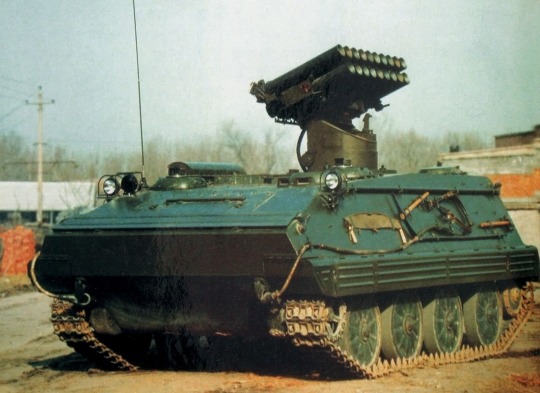
A Type 70 MLRS (Multiple Launch Rocket System), late 1980s.
The Chinese Type 70 MLRS is a rocket artillery version of the Type 63 APC, carrying 19 tubes of 130mm rockets. Development of this variant lasted about 10 months, finishing in November of 1970, with trials beginning the following year with 18 test vehicles being delivered to the 1st Tank Division of the People's Liberation Army. After receiving improvements, it would finally be named the Type 70 130 mm self-propelled rocket launcher in 1977. Mass production began in 1979 ended soon after, resulting in only 244 being produced. It most notably saw combat in Vietnam during the Sino-Vietnamese War in 1979.
Fun fact: According to Veteran recollections of this vehicle, it was used sparingly, as it cost 500 Yuan for one rocket. If the entire battalion fired all of their rockets, that is, 18 Type 70s firing 19 rockets each, it would cost well over $100,000 USD today!
2 notes
·
View notes
Text
Throughout this week, I've deeply missed my grandparents, particularly my grandfather. It's a strange feeling, but I find myself yearning for the days we spent working in the fields on our farm and savoring our sweet honey tea by the lake after dinner. Sometimes we would chat, while other times, we'd sit in silence, gazing at the stars in the sky. Occasionally, he'd sing a song, a famous Chinese tune called "Leaves from the Vine." I never understood why he sang it until one day, as tears welled up in his eyes and he looked heavenward, I couldn't help but ask him about its meaning.
With a warm smile, my grandfather began to share the story behind the song. He told me about his two sons, Su-wang and Leo Wano Zhou. Su-wang was a kind soul who became a soldier in the PLA, loved children regardless of their background, and had deep faith in the Lord Jesus Christ. He believed that helping those in need was a life well-lived. On the other hand, Leo Wano was a spoiled and ungrateful son who thought himself superior to others, a perfect blend of Yin and Yang.
My grandfather explained that when he looked at me, he saw shades of Su-wang—always cheerful, always smiling, regardless of life's challenges. Intrigued, I asked what had happened to Su-wang. With a heavy heart, my grandfather revealed that Su-wang had lost his life in the 1979 Sino-Vietnamese War at the young age of 20. The song, "Leaves from the Vine," was a way for him to honor the son he never had the chance to bury.
As we sat by the lake in a poignant silence, I contemplated the lyrics of the song. The falling leaves, so delicate and slow, symbolized the fragile nature of life, drifting to the ground. My grandfather longed for his son, taken away to fight a war that wasn't his own.
Moved by love and sorrow, I asked my grandfather why he had never spoken of Su-wang before. He replied, "Because it still hurts, my child." I rushed into the house to gather incense sticks, a bowl of nuts, and the Bible. Together, we lit the incense sticks and placed them in the ground, setting the bowl beside them. It was our way of letting Su-wang rest in peace, to honor his memory and the sacrifice he made for his country
We read Matthew 11:28-30, and even though we didn't have Su-wang's ashes, I could see the joy in my grandfather's eyes. It brought immense comfort to him to finally let his son's soul rest. But he wondered aloud, "When I am no more, who will bring honor to my brave soldier boy?" Looking at him, I made a promise, "I will, grandfather. I will bring honor to the Zhou Clan. One day, I will amaze everyone who thinks less of us, and I will bring honor to Su-wang."
He smiled at me and said, "My child, you are already the greatest gift God has blessed us with. Su-wang is proud of his niece and the remarkable young lady you have become." He continued, "I believe the Lord takes the greatest souls up to the heavens." Since that precious night, Su-wang has been a part of my daily prayers, a constant reminder of the duty I bear to honor his memory and the love I hold for my family
5 notes
·
View notes
Text
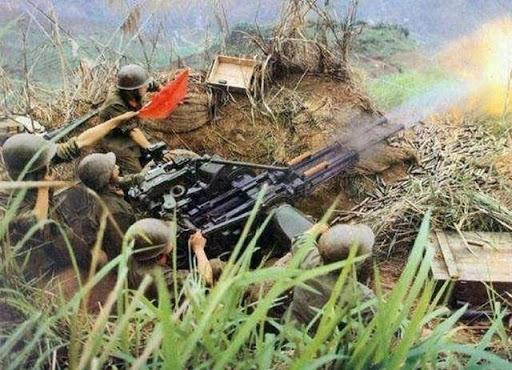
Chinese AA guns firing at Vietnamese positions, Laoshan, 1984
22 notes
·
View notes
Text
the ultimate weakness of the CCP is being wrong about the sino-vietnamese war
#i'm making a goof here#they're wrong about a ton of other shit too#also you know#you cant 'um actually' a dictatorial government away
1 note
·
View note
Text
Defending Philippine Waters: A Call to Action
J.J. Slade December 10, 2024Baybay City, Philippine China’s approach towards Vietnam is marked by a notable caution, a strategy rooted significantly in the painful lessons learned from the Sino-Vietnamese War of 1979, where Vietnam decisively resisted Chinese aggression and dealt a sharp blow to Beijing’s military ambitions. This historical clash served as a stark reminder for China, instilling…
0 notes
Text
Tanks of North Korea
The history and development of the tank in North Korea spans the period from their adoption after World War II with the foundation of the Korean People's Army, into the Cold War and the present. Over this period North Korea has moved from being an operator of Soviet-designed and produced tanks to being the manufacturer of its own tanks. Many tanks were ordered from China through the years.
China’s first tank factory, Inner Mongolian Machinery Factory No. 617, was set up in 1956 with Soviet assistance. It produced its first T-54A in 1958 with Soviet parts. The Chinese-built T-54A design was officially adopted into PLA service in 1959, hence the name Type 59.
The basic Type 59 served for almost two decades with very little modification. It was provided to Vietnam during the Vietnam War, and it later fought Vietnam during the Sino-Vietnamese was in 1979. That experience lead China to take a hard look at its tank fleet and procure upgrades. China attempted to create some more modern tanks based off the Type 59 such as the Type 69 (following the Chinese capture and reverse engineering of a Soviet T-62 captured during the 1969 Sino-Soviet border skirmish), but these tanks did not see wide service until later.


0 notes
Text
youtube
How the Sino-Vietnamese war helped China kick-start China-US relations and economic reforms
China attacked Vietnam in 1979 for an economic motive. In retrospect, the Sino-Vietnam war paved the way for China’s economic reforms and helped the country rise in dominance. The mastermind of the PLA’s operation was former CCP leader Deng Xiaoping. He took advantage of the US-China-Russia relations at the time and designed a military operation to gain American trust and was successful in deceiving the West with his agenda of economic reforms.
from Lei's Real Talk
0 notes
